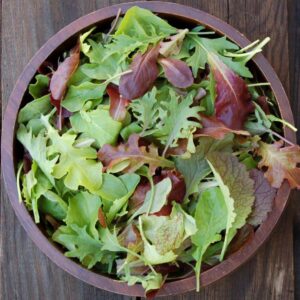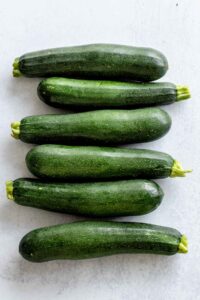Satin Touch News
8 Surefire Vegetables and Herbs for Beginning Gardeners
Learn the edible plants that are popular and easy to grow in a backyard or container garden.
For gardeners, poring over the pages of a seed catalog can be a feast for the eyes. Whether it’s heirloom crookneck squash or ‘Green Zebra’ tomatoes, the seed varieties available to home gardeners rival any farmers market. Similarly, going to a nursery and seeing row upon row of baby tomato, lettuce and kale plants can make it hard to decide where to start. What’s a backyard food grower to do?
By growing a small selection of carefully chosen crops, you will give yourself the best opportunity for success. If you’re new to gardening, it’s better to grow just five types of vegetables rather than 15. Over time, you’ll learn which crops and varieties work best for your microclimate, taste and lifestyle.
Here are some of the best vegetables and herbs for gardeners of all types, including beginners. In addition to being easy to grow and productive, many of these crops are well-suited to growing in small spaces.
Start with your favorite vegetables that you regularly buy from the grocery store. If you’re a big fan of kale salads, be sure to plant kale. Radishes are very easy to grow and look gorgeous, but if you’re not a fan of eating them, don’t grow them.
Sweet potatoes and peanuts are popular crops in the American South, but they rarely succeed in northern climates. However, tender greens like spinach thrive in cool environments. To find vegetables that suit your growing region, look for local seed companies, check out what’s being grown in farmers markets and ask neighbors what they’re growing. Find out your area’s average first and last frost dates; these will provide an essential guideline for when to plant seeds.
Your garden space will also inform what you can grow. If your space is small, choose plants with a small footprint. Zucchini can grow in a large container, but their huge, sprawling leaves may take up the better part of a balcony garden.
1. Snap Peas

Few things in life rival the flavor of a fresh snap pea right off the vine. Because the sugars in this crop degrade quickly, snap peas truly taste better when grown at home. With their vertical growth, peas don’t take up much room — just be sure to set up a trellis and train them rigorously, as the vines can get unruly. Peas are a cool-season crop and are planted directly into the soil as seeds in late winter or early spring in most areas.
Tip: Use a pea inoculant (a powder that acts like a probiotic for peas and beans) at the time of planting to ensure success. Look for varieties that are resistant to pea enation mosaic virus and powdery mildew.
When to plant: Sow seeds about four to six weeks before the average last frost date in spring. In mild-winter climates, peas can also be planted in the fall; sow seeds two to three months before the first expected frost date.
Light requirement: Full sun to partial shade; provide afternoon shade in hot climates.
2. Radishes

Cheery, colorful radishes are some of the first vegetables gardeners can harvest in the spring. This attractive cool-season plant grows quickly and takes up little room, making it an ideal choice for small-space gardeners. Don’t know what to do with radishes? For a classic French dish, slice them raw (wash and scrub well to remove soil) and serve with salt and butter. The leaves are also edible and can make a good substitute for cooked spinach.
When to plant: Sow seeds two to three weeks before the average last frost date in spring, and in late summer four to six weeks before the average first fall frost. Continue sowing seeds every two weeks in both spring and fall.
Light requirement: Full sun to partial shade
3. Mint

Want your own supply of peppermint tea? It’s as easy as growing a peppermint plant. This perennial herb grows so vigorously that it should always be planted in containers — otherwise, it may take over your entire garden. Keep your mint tidy with regular trimming, or allow it to go to flower and attract tons of bees. This hard-to-kill plant is a great choice for apartment gardeners.
When to plant: Purchase seedlings from a garden supply store, or ask a friend to dig up a section of his or her plant. Plant seedlings in early spring, or in the fall in warm-winter climates.
Light requirement: Full sun to partial shade
4. Chives

Snipped chives taste delicious on eggs, pasta — just about everything. In grocery stores, they can be difficult to find and expensive, but in gardens, they’re incredibly easy to grow. This perennial herb has a long harvest season and will come back year after year if you plant it in nice rich soil. Try growing them in a large pot right outside your kitchen window. Harvest chives by simply giving them a “haircut” with kitchen scissors as needed.
When to plant: Purchase seedlings from a garden supply store, or start seeds indoors eight to ten weeks before the average last frost date. Plant seedlings in the early spring. Chives are perennials and take several years to reach their full size, so harvest lightly until your plants are well-established.
Light requirement: Full sun
5. Mesclun Mix

The word “mesclun” comes from the Provençal word for “mixture.” In gardening terms, mesclun is a combination of seeds that are planted together to create a ready-made baby salad featuring a variety of colors, flavors and textures. The result is similar to the packaged salad mixes you can find in grocery stores, but far more fresh and exciting. Seed catalogs often have a variety of mesclun mixes to choose from, typically featuring arugula, mustard greens and lettuce. To achieve success with mescluns, sow seeds thinly (about one seed per square half-inch). Plant some each week and harvest leaves with scissors as soon as they look ready.
When to plant: Plant a little mesclun every one to two weeks from early spring to early summer. In mild-winter climates, plant again from late summer to mid-fall. Water well and protect from hot temperatures.
Light requirement: Full sun to partial shade
6. Kale

This popular low-maintenance green is a must for many gardeners. If you’re growing kale in containers, sow seeds similarly to mesclun mixes and harvest the baby greens. In raised beds with rich soil, many varieties will grow more than 6 feet tall. Choose your kale variety according to your climate and season. ‘Lacinato’ kale, also called dinosaur kale, is a Mediterranean plant that does well in the summer or in warm environments. Curly Scotch kale and tender Siberian kale are great winter crops that can tolerate frost.
When to plant: Sow seeds in early to midsummer for fall and winter harvest. For a summer harvest, plant seeds in spring two weeks to a month before the last frost date.
Light requirement: Full sun; provide afternoon shade in very hot climates.
7. Cherry Tomatoes

Tomatoes are one of the most rewarding crops to grow in a home garden. If you’re a new gardener, start with a classic disease-resistant cherry tomato like ‘Sweet Million’. Be sure to build a trellis for the long vines, and plant them in a sunny spot where they can be protected from rain. Cherry tomatoes are an ideal choice for container gardens.
When to plant: Set out starts or nursery plants when the soil is warm and there’s no danger of frost. Start seeds indoors five to eight weeks before your planned planting date.
Light requirement: Full sun
8. Zucchini

Get ready, because once your zucchini plants start producing, it’ll be hard to keep up with them. Zucchini are famous for producing more food than most people can handle. Check your plants every day or two, and harvest them as soon as they’re a little over a foot long (bigger fruits can get tough and stringy). Zucchini are great in baking and popular as a low-carb pasta substitute. Just make sure that you have enough space in your garden for this sprawling plant.
When to plant: Sow seeds about two weeks after the last frost date when soil temperatures reach 70 degrees Fahrenheit (21 degrees Celsius). You can start seeds indoors about one week before that date.
Light requirement: Full sun
US News: Design and Rehab Increases ROI
satintouch can help you get the most out of your property. US News names some of the services we provide that can help you get the best ROI. Here are some rehab and design recommendations from US News we can help you with on your property:
Kitchen Remodel
A minor kitchen remodel will recoup 80 percent of its cost, according to Remodeling Magazine, while a major midrange kitchen remodel only has a 65 percent return on investment.
Bathroom Improvements
Replacing the vanity, lighting and toilet are an inexpensive way to dramatically improve the look and feel of the room.
Interior Paint
It’s hard to calculate the return on investment for a coat of paint, but if there’s anyway you can help bring light into the space by choosing the right design and color of paint, it improves curb appeal.
Attic Bedroom
Renovations within the existing envelope of your home – those that don’t require you to build an addition or expand the roof and foundation – often return more value than building extra rooms onto your home, and they’re much cheaper. Converting an attic into a bedroom ranked third of the 35 improvements in the report, returning an average of 84.3 percent of the amount spent.
satintouch Quarterly Summer 2017
Don’t make these House Flipping Mistakes
It might be cheap to buy, but is it the right place, do you have the right tools and professionals to turn it into a profit?
With plenty of TV Shows about house flipping, there’s a lot of interest and a n allure of quick money in the industry, but be aware, it looks a lot easier than it does on HGTV. Make sure you know the pitfalls before taking one on, and always lean on professionals — especially for your first flip.
Problem: Lack of funds
Real estate is expensive. Research all your financing options and find a lender that offers low interest rates. An easy way to research a prospective property’s total cost is by using a mortgage calculator or speaking to a mortgage banker.
Problem: Lack of time
Simply put: flipping takes not only a lot of investment, but a lot of time. Once you own the house, you’ll need to invest time to not only rehab it, but also schedule a host of inspections before you can consider selling it. And if you’re selling yourself, you’ll act as a real estate agent doing lots of showings before you find the right buyer.
Problem: Lack of Handy-man Skills
Lots of people take on a house flip with little to moderate handy-man skills. This is not a good idea unless you have lots of time and money to sink into the project. Hiring professionals will ensure that you turn the house in a timely manner and on your budget.
Problem: Lack of Knowledge
You need to be able to choose the right property, at the right location, and at the right price, and keep your budget to fix it up within a good margin to sell at a healthy profit. It’s easier said than done.
Too Long; Didn’t Read (TL;DR)
If you didn’t read anything until this point, know that before you get involved in house flipping, do your research and know what you’re getting into. And always hire professionals to get the job done right and on budget.
Giving Back One Soccer Team at a Time
Check out the satintouch soccer team! We’re proud to sponsor the Minneapolis-based “El Salvadors!” They’re a group of great kids with great talent and promise.
We can’t wait to cheer them on at the next game!
Targeting a more sedentary population: Baby Boomers
The oldest Baby Boomers are turning seventy-one in 2017. As this huge segment of the population grows older, many are finding it difficult to navigate and care for larger homes and are downsizing to apartments and condominiums. Consider appealing to this growing market share by adding some of these features to your property:
- Walk in baths and showers.
A bath that requires a resident to step over it is a potential hazard to older renters as they grow more physically limited. Walk in showers are an easy solution that is considerably safer. A walk in bathtub—which has a sealed door, allowing a user to step in before filling it with water—can provide the same benefits of a bath/shower while facilitating the less limber residents.
- Replace round doorknobs with lever-style knobs.
Doorknobs and locking mechanisms that work smoothly are important to any resident, but to older residents, they may be essential. A conventional door knob can be difficult for some older tenants to use—especially if they suffer from arthritis or similar conditions. Replacing round knobs with lever-style knobs throughout a unit makes the living space much easier to navigate.
- Provide good lighting.
Good lighting throughout a property is essential for residents with worsening eyesight and slowing reflexes. Inadequate lighting simply makes a space unsafe. Upgrading to higher-luminosity LEDs will save your residents on their utility and give them plenty of light to see by. Installing night-lights throughout a residence is a special touch that may win a potential tenant over.
- Install a fire-prevention system in the kitchen.
Let’s be honest—it’s not just older residents who leave a stove on from time to time! This is a feature that will keep your tenant and the whole property safe. A simple paint timer mechanism for the stove and oven can extend a tenant’s self-sufficiency and give everyone peace of mind.
- Keep floors safe.
A slippery floor can be difficult for an older person to navigate. Good carpet is easier to walk on—and, if it ever does happen, easier to fall on—than hardwood laminate or linoleum. In places where carpet can’t go, like bathrooms and kitchens, handle bars and non-slip floor liners are an inexpensive and simple way to further adapt a room to the needs of elderly residents.
Retain tenants with design and rehab
In a given year, 50 percent of tenants will move out of their current rental unit, which can lead to extra work and extra costs for property managers. An older facility is especially vulnerable to turnover as renters seek newer living spaces.
While building a new property may be out of the question, an upfront investment in your property during a turnaround period can improve its living quality, generating higher satisfaction and motivating the next residents to stick around longer. If you want to keep your retention and renewals high and increase your market rate, make an extra investment during the turnaround period to rehab and design your space for the contemporary renter.
Even living spaces that have been gently lived in will suffer wear and tear over the years. To keep your property competitive, rehab is necessary after the departure of each resident. Nail holes, pin holes, and wall damage from furniture being moved in, out, and around is evidence to potential clients that a space has been well used. Minor wall damage may be one of the most superficial repairs to make, but that means it’s also one of the first things apartment hunters will see—especially if you are showing an unfurnished apartment. A patched wall and a fresh paint job for new tenants will give them the sense that they are living in their own space, not a used one.
But other repairs are also important. Old appliances, besides being huge energy wasters for your tenants, are a sure sign of a property’s age. On the other hand, newer appliances can make a space feel, if not state of the art, at least up to date. Make sure all of the everyday elements of the apartment work smoothly. Do sliding doors slide? Do doorknobs turn? Do drawers go in and out smoothly? Does the ceiling fan still move air? None of these things make an apartment unlivable, and it may be tempting to go the cheap and easy route by skipping the small stuff. But small annoyances will build up, frustrating tenants and motivating them to move on when their leases are up.
Attention to design also makes a huge difference in the look and feel of a property. Property managers often reach for the cheapest and easiest elements when they are rushing to put a property back on the market. Little consideration goes into whether a fixture matches a countertop, or whether the laminate wood flooring in the living room matches the flooring in the bedroom. A mismatched detail here and there may seem like the way of the business, but the overall aesthetic that such inattention creates devalues your apartment. On the other hand, when the elements of a space synchronize, an old building can look and feel fresh and new. A careful and professional hand designing a space, rather than simply running through a checklist of minimum repairs, creates and aesthetic that tenants will pay more for and stick with longer.
At satintouch, we are equipped to take your property through the whole process of rehab and design. Our method is customer centered: we work to develop a partnership with our clients and deliver a great product that is tailored to our clients’ visions for their properties. We love to help our clients create spaces that people want to live in—no matter how old the shell is.
Consider changing your lease end date.

You know the adage: “Rule your schedule; don’t let your schedule rule you.” Property managers need to know how to manage their time well if they are going to manage their properties well. Changing the end date on your leases may be a helpful way of making the most of your time and giving the best to your tenants.
The atmosphere of the management is an important factor to many apartment-seekers. A potential tenant’s judgment of how pleasant it will be to deal with your team could tip the scales for or against your unit. When moveouts are piling up at the end of a month and you barely have time to take inquiries with all of the paperwork and turnarounds to do, you’re in danger of telegraphing to inquirers that you will be difficult to deal with and will not have time for their concerns.
That’s not to mention that temptation to cut corners when you have to rush. Having too much work and too little time means lower quality and ultimately poorer reviews. Even when you have a trusted turnaround provider like satintouch to do the heavy lifting, it may be impossible to schedule several units at the same time, and there’s a good chance your property will be sitting idle when it could be generating revenue.
A simple way to mitigate these risks of over-busy ends of month is to stagger the end dates on your leases. Rather than having every lease terminate at the end of a month, set some to end mid-month—some the first Monday, some the second Monday, and so on. Mid-month moveouts will spread your work out, keep you sane, and help you make a positive presentation to potential tenants. Avoiding competition with other property managers who are scheduling labor at the end of the month will also mean quicker turnarounds and potentially a faster return to revenue generation.
Occupancy is high, so is turnover. We can help.
When you have a high volume of tenants, you can expect high turnovers. With a property of 225 apartment homes and a fifty percent turnover rate, that’s about 112 move outs a year, 9.3 moves a month. For apartment managers, that means a long checklist of things to make an apartment ready for new tenants, not to mention the extra work and expense of hiring employees to do the job.
Thankfully, at satintouch we provide all the services your apartment needs to be ready for its next residents, beginning with a thorough inspection of edges, surfaces, and furnishings that need to be protected from paint or given special cleaning treatment. Our approach is not a “one size fits all” spray can of paint and chemical cleaners. We tailor everything we do to your space and your needs. Our goal is to create a partnership with you, deliver great results, and ensure your satisfaction.
After removing any items—large or small—left by the previous residents, we will restore or reinvent your room to your vision. Whether you need a simple paint job or custom work, we provide careful and detailed painting that will leave your room looking as good as new. In addition to basic carpet cleaning, we offer deodorizing and pet odor treatment, stain removal, and blacklight services. We provide deep cleaning for every room and surface, and we can repair nearly any appliance that needs attention and any damage or simple wear and tear that previous tenants have left behind.
At satintouch, we are equipped to handle any size apartment with any number of rooms, and we won’t call a job finished until you’ve inspected it yourself. We guarantee your satisfaction. In fact, if you are not 100 percent satisfied, call us back by 11 am the next day and we’ll return to correct any problems. If you still aren’t satisfied, your service will be free.
343 Initiative Success!
Thank you to all of our generous customers! Because of your patronage, satintouch’s 343 Initiative has raised over $11,000 dollars for Minnesota veterans, students, and children since its launch at the end of 2016! Our work’s not over yet, though. With your help, satintouch will continue to raise support for the needs of our community.
The 343 Initiative is our way of giving back to our community here at satintouch. When you contract with us, three percent of our fee will go to your choice of one of three initiatives that are doing good in Minnesota.
3 Three Percent
4 For
3 Three Causes
Our clients do not incur any additional cost when they participate, but they walk away with the assurance that 3 percent of their contract with satintouch will be helping those in need. The choice of causes are Pets for Vets, Blanket Minnesota, and the 343 Scholarship.
Pets for Vets recognizes the difficult transition that US servicemen and women make as they return from protecting our freedom and defending our borders. Our veterans have put their lives on the line to defend our country, and we want to show them our gratitude by providing them with a companion animal of their choice for life, including all the necessary vaccinations and food for one year. The 343 Initiative has raised $4,120.35 to support our veterans!
Blanket Minnesota brings some holiday joy to children who are in the hospital during the Christmas season. This cause provides children with handmade blankets and a stuffed animal to keep them company and remind them that they are loved and cared for. Blanket Minnesota has raised $3,756.52 to give gifts to Minnesota children.
The 343 scholarship recognizes the value of a good education to success in the 21st century and the barrier of expense that prevents so many industrious and community-minded students from receiving an education that matches their talents and desires. The 343 scholarship will help pay for tuition, books, and other expenses for a student who exemplifies the spirit of 343’s dedication to community. Because education is important across the globe, some funds will go toward building orphanages in Sierra Leone. The 343 scholarship has raised $3,574.36 for students foreign and domestic.
With your continued support, satintouch and the 343 Initiative will continue its support of these important causes. When you contract with satintouch, you’re not only making a valuable investment in the rehab and redesign of your rental space but also in our local and global community. Thank you for your support!




